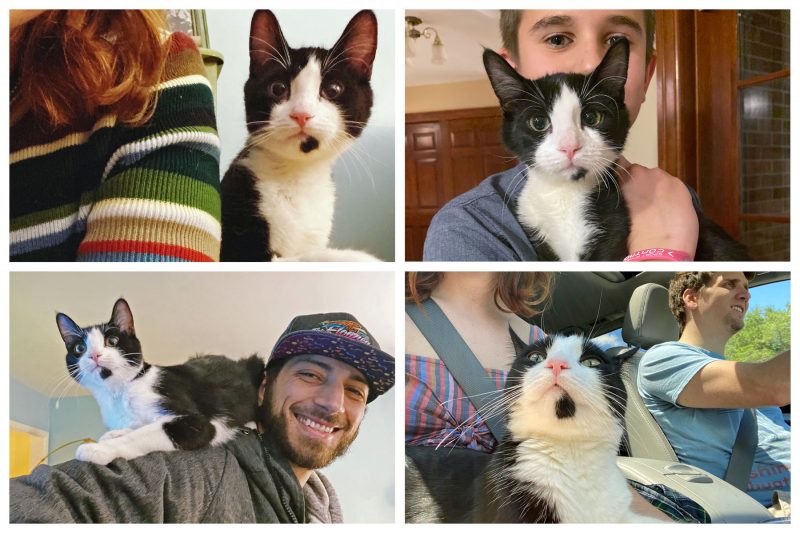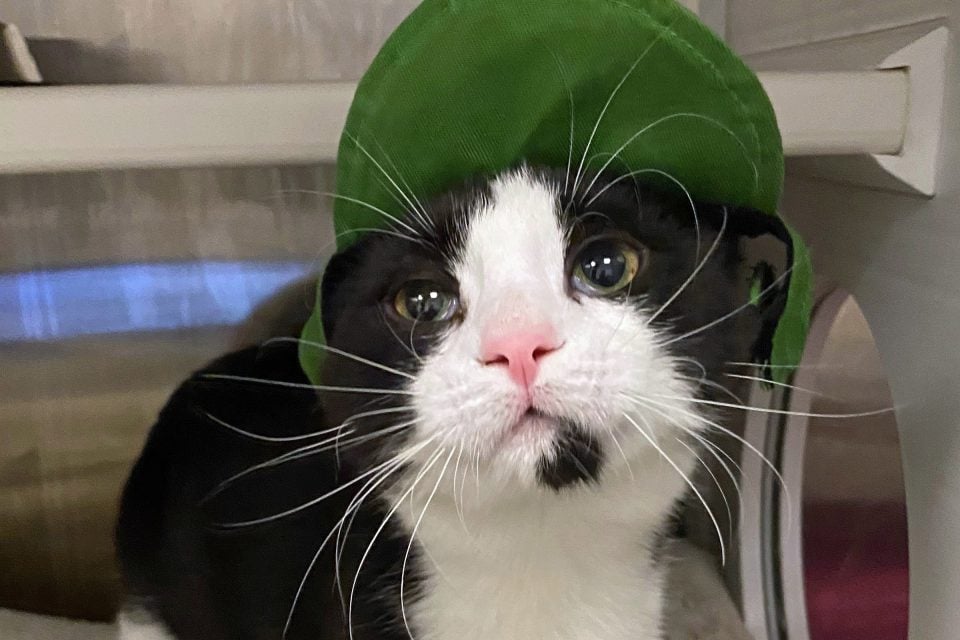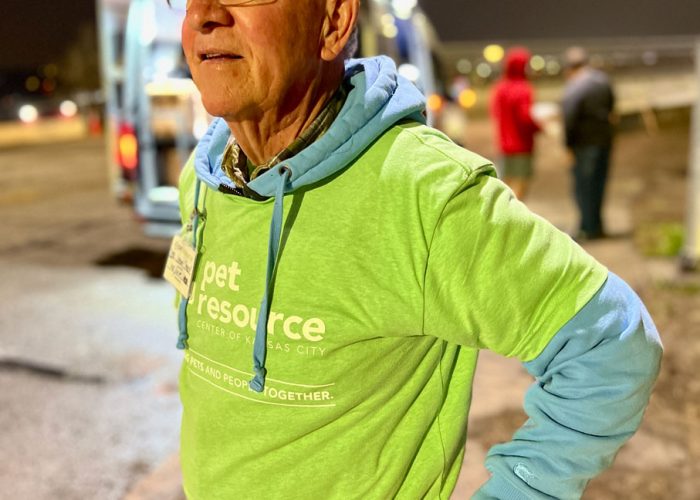This is the journey of a perfectly imperfect cat named Squab.
In August of 2019, our team got a call from a community member who found a newborn black and white kitten in very poor condition. He was only about 7 to 10 days old – his eyes still closed – and he wasn’t latching onto his mom to nurse. Members of our outreach team tube fed this little guy for the remainder of the day until they could safely transfer him to a local animal shelter for extended care.
That’s when he met Lisa, the feline foster program manager at KC Pet Project (KCPP), for the first time.
Having just learned how to tube feed kittens days before Squab came to their shelter, Lisa thought, “Oh, I can totally do this. Perfect!” And because of the ‘round the clock care he was going to require, she thought it’d be best if she took him home for the first few days until he learned to latch onto a bottle.
But little did she know that this journey would turn into an epic foster fail.
“It wasn’t until later on down the line that I really actually fell pretty hard in love with him and decided I couldn’t let him go,” she gushed.
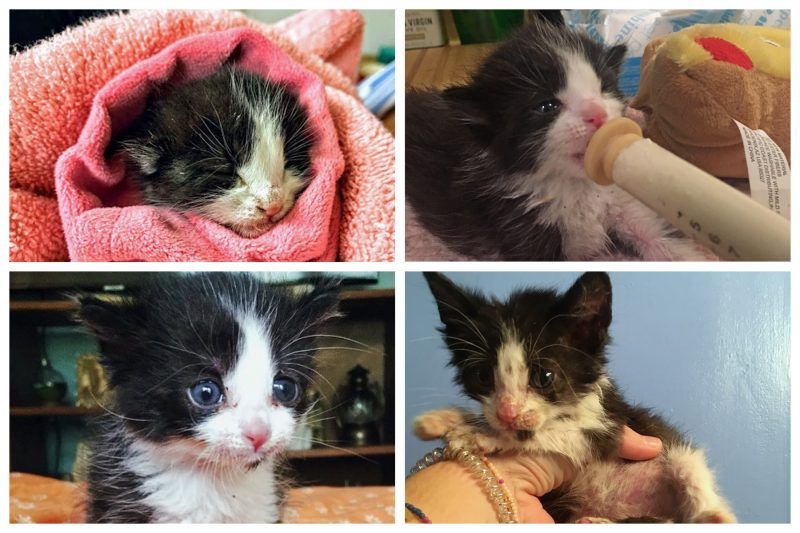
One hurdle after the next
Tube feeding was the first hurdle Lisa was determined to conquer, and it took Squab about four or five days to drink formula from the bottle. After that, he only needed feeding every two hours until he was big enough to eat on his own.
However, the hurdles just kept coming.
At about 6 weeks old, Squab began to lose hair and not just in a couple of spots either; it was large chunks all over his body. That’s when Lisa found out that he had ringworm.
“Well, now I really won’t be able to find him another foster,” she thought. “So I’ll just keep him a little while longer and finish up his ringworm treatment.”
That didn’t clear up completely until he was 6 months old, which is quite longer than she’d expected. At that point, he had already fully integrated into her home and got along well with her other three cats. And even though she had started to grow attached to him, she still hadn’t made the decision to keep him as her own quite yet.
“But that’s when the weird stuff started.”
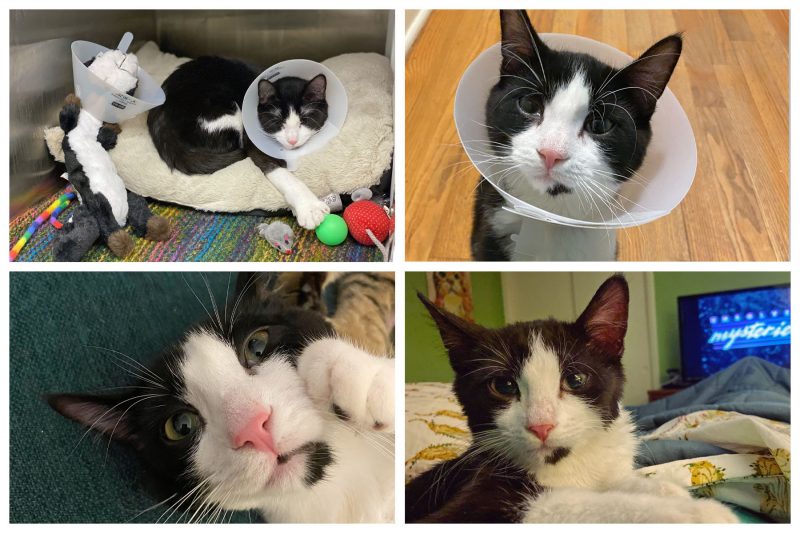
The mystery condition
In the middle of the night, Lisa woke up to the sound of Squab screaming in his room (where he stayed while he had ringworm). Thinking maybe he was just mad about being away from the family, she kept him company until he calmed back down. But he kept the screaming up for many more nights to come.
Nothing seemed to be working, so Lisa put a camera in the room to see what was actually going on. She noticed he was attacking his tail, and it only seemed to intensify as time went on.
The vets at KCPP thought maybe his tail was itching because of ringworm, but he continued to do it after that cleared up. Their next thought was that he was doing it because he had a break in his tail (cats often attack their tails as a defense mechanism because it’s causing them pain), but the x-rays came back perfectly normal. They even tried treating him for nerve pain with gabapentin until that would wear off, and he was right back to biting his tail.
“But then there was a twist,” Lisa mentioned.
After he got neutered, he had to live in the cone of shame for a couple of weeks, and that’s when the lightbulb went off. She noticed he would stop attacking his tail while wearing the cone, which was perfect because she didn’t want to keep him medicated unless absolutely necessary.
She took him to see a neurologist specialist at the University of Missouri (MU) where they treated him for focal seizures (when the tail twitches and tenses up) and combined nerve pain meds with neurological meds. But yet they ran into another dead end.
Finally, they came across a condition called hyperesthesia (when the nerves are hypersensitized to pain). But the treatments Squab already received through KCPP were the same ones they would’ve proposed to treat it. And if those weren’t working, there had to be a behavioral component, which meant more meds… something Lisa didn’t want to do, so the cone it was.
With all of his medical imperfections, Squab wasn’t the best candidate for adoption since they weren’t sure what exactly his condition was or what would come of it.
“At that point, I talked to my husband and I was like, ‘Well, we should probably just keep Squab,’” she said. “And he was like, ‘Oh, of course we’re keeping him.’”
After months of being a member of the family, his official adoption came naturally.

The rest is history
Now a year old, Squab has grown up to be the brave, handsome tuxedo cat he was always meant to be. And he’s unapologetically himself, despite his imperfections.
“He’s such a confident cat because of all the people he’s met,” she said. “He’s a total cuddle bug, too.”
He became a staple at KCPP after traveling to work with her everyday for six months and was even a feline ambassador while that program was still in place, helping feral cats become more confident and comfortable socializing with people.
He loves meeting new people and pets, getting his head rubbed and exploring the world alongside his favorite humans. He has taught Lisa how to improvise and be patient throughout their wild journey together, which I’m sure neither of them would change for the world.
“He’s just an interesting character,” she said. “He’s just been perfect, aside from all his imperfections.”
Squab’s story goes to show that any pet battling health or behavioral issues can still live a vibrant lifestyle. That they can be loved wholeheartedly by families that will never give up on them. And that by working together as a community, we’re able to keep pets like Squab and people like Lisa together… right where they should be.
Cheers to all the differently-abled pets and the loving humans who never give up on them. You make writing about the human-animal bond even more rewarding.
#ThePowerOfPets
